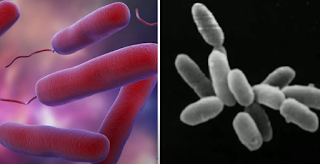Why do we have three Domains in classification?
If you mention the name Carl Woes to most biology students, you may draw a blank stare. Carl Woes was a microbiologist at the University of Illinois. He championed the idea that organisms can be classified by looking at their genetic material. As a result, modern classification had a paradigm shift and added a third domain thanks to his work. Mr. Woes was the first to show how Archaea organisms are not bacteria nor a eukaryote but a completely different domain of organisms.
Let’s take a look at how bacteria and Achaea are different.
One of the first things you will learn about archaea is that many live in extreme environments like deep hydrothermal vents, or in hot springs.
This is true but they can also be found living next to bacteria in your gut.
Archaea do share many similarities with bacteria which may cause you to think they are the same organism.
*They are single-celled organisms
*They do not contain a nucleus or membrane-bound organelles
*They reproduce asexually.
However, there are some important differences.
1. First, the cell walls of bacteria and archaea are different.
Bacteria have cell walls that contain peptidoglycan, archaea cells do not contain peptidoglycan in their cell wall.
2. Cells have membranes that surround them and allow materials in and out and separate them from their environment.
The plasma membrane of archaea uses isoprene chains instead of fatty acid chain which are found in bacteria.
4. I find this interesting, to date, no archaea are found to cause disease in humans some diseases we may get are caused by a bacterial infection.
As a result of these differences and several others, modern classification changed and a third domain was added and now we have three domains, bacteria, archaea, and eukarya.
Related Links





0 comments:
Post a Comment